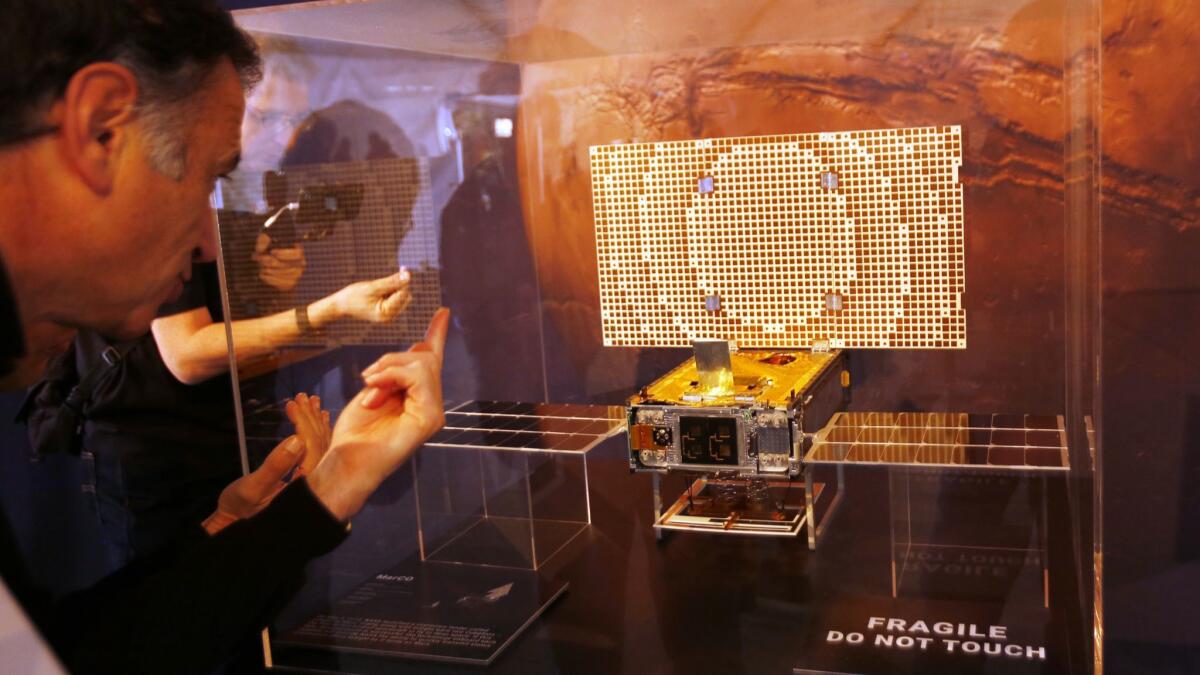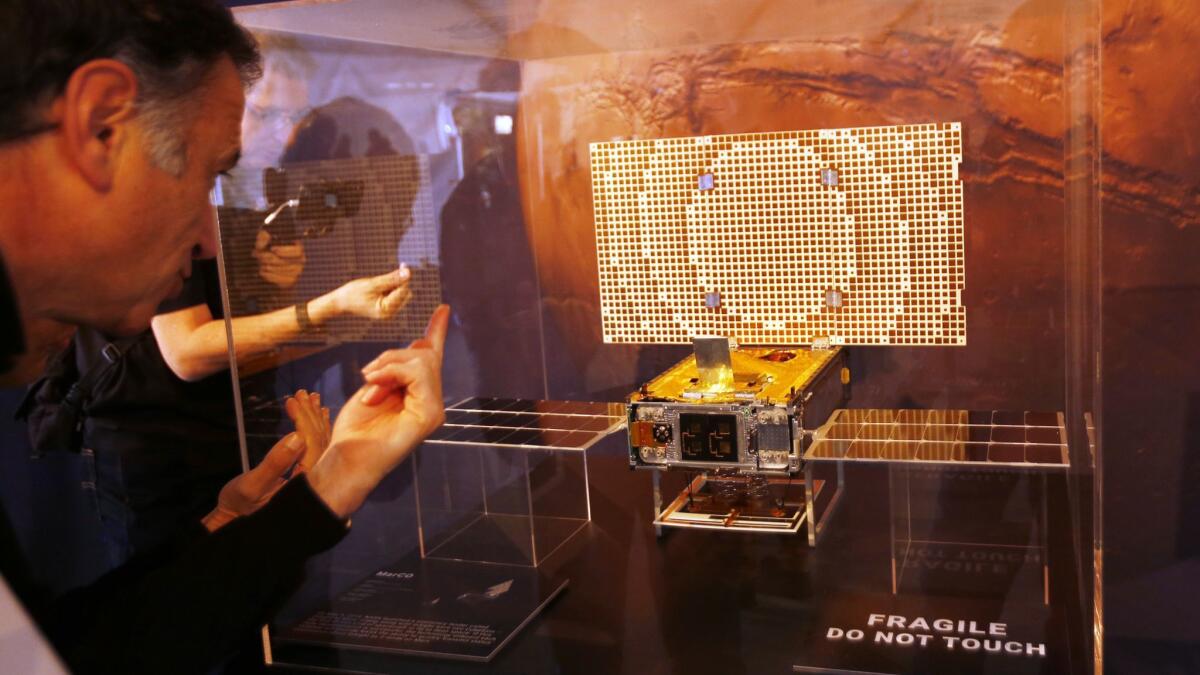A big day for small spacecraft: NASA’s MarCO twins perform flawlessly at Mars

- Share via
Nearly 100 million miles from Earth, an interplanetary experiment just went off without a hitch.
As NASA’s InSight mission touched down on Mars Monday, two briefcase-sized companions relayed real-time data to Earth as the lander entered the Martian atmosphere, deployed its enormous parachute, and finally settled safely onto the surface of the Red Planet.
The data the twin spacecraft transmitted to Earth during InSight’s entry, descent and landing was not essential to the success of the mission, NASA officials said. But their stellar performance proves that these diminutive spacecraft could become an integral part of future missions.
“Today has been a fantastic day for spacecraft both great and small,” said Andrew Klesh of the Jet Propulsion Laboratory, the chief engineer for the experiment.

The small craft are known collectively as Mars Cube One, or MarCO for short. They’re CubeSats, a new breed of miniature machines made up of modules that measure just 4 inches on a side. MarCO A and MarCO B contain six modules apiece.
There are currently hundreds of CubeSats in orbit around Earth, but the MarCOs are the first to be tested in deep space.
The MarCOs launched with InSight in May, but they were soon released from the rocket so they could follow their own trajectory to Mars. Each was equipped with a softball-sized radio, two radio antennas, two solar panels, a small amount of propellant and a camera.
Their primary job was to fly by Mars just as InSight was entering the atmosphere so they could instantly relay signals from the spacecraft to antennas here on Earth. They did not follow the lander down to the surface but they did snap a few images of the planet and took some measurements of the Martian atmosphere as they flew past.
It will take the twins two weeks to send the rest of the data they collected back to Earth, Klesh said.
“MarCO will provide unique information about all the many things that have to happen from when we enter the Martian atmosphere until the landing,” said Jim Green, director of planetary science at NASA. “We want to know what happened at each stage.”
Now that InSight is sitting pretty in Elysium Planitia, MarCO A and B will enter an elliptical orbit around the sun.
Thanks to their successful performance, Klesh’s team is already talking with NASA headquarters to see what they might do next with the MarCOs and other CubeSats.
“We look forward to many more missions and concepts in the future,” he said.
Do you love science? I do! Follow me @DeborahNetburn and “like” Los Angeles Times Science & Health on Facebook.
MORE IN SCIENCE







